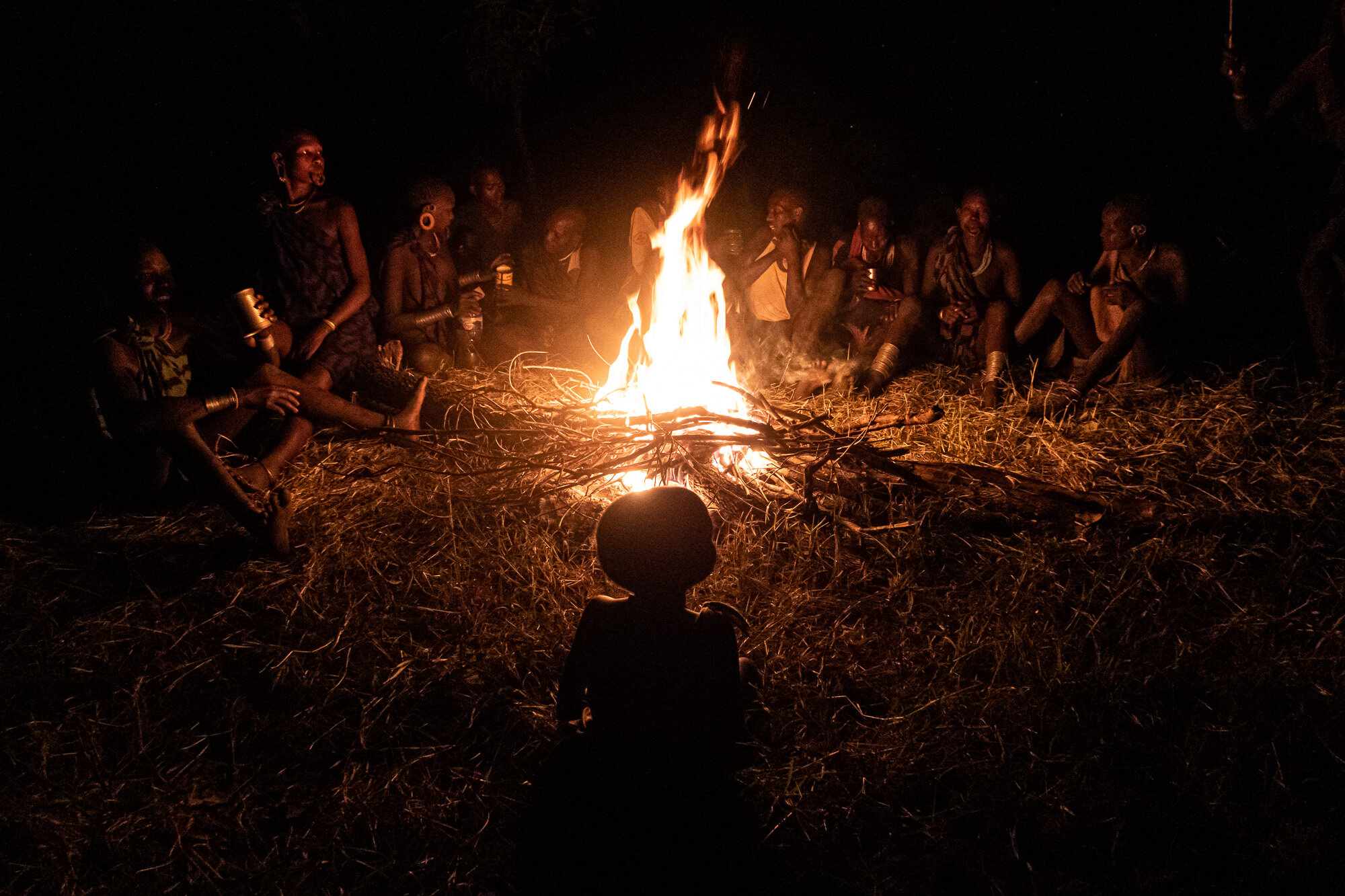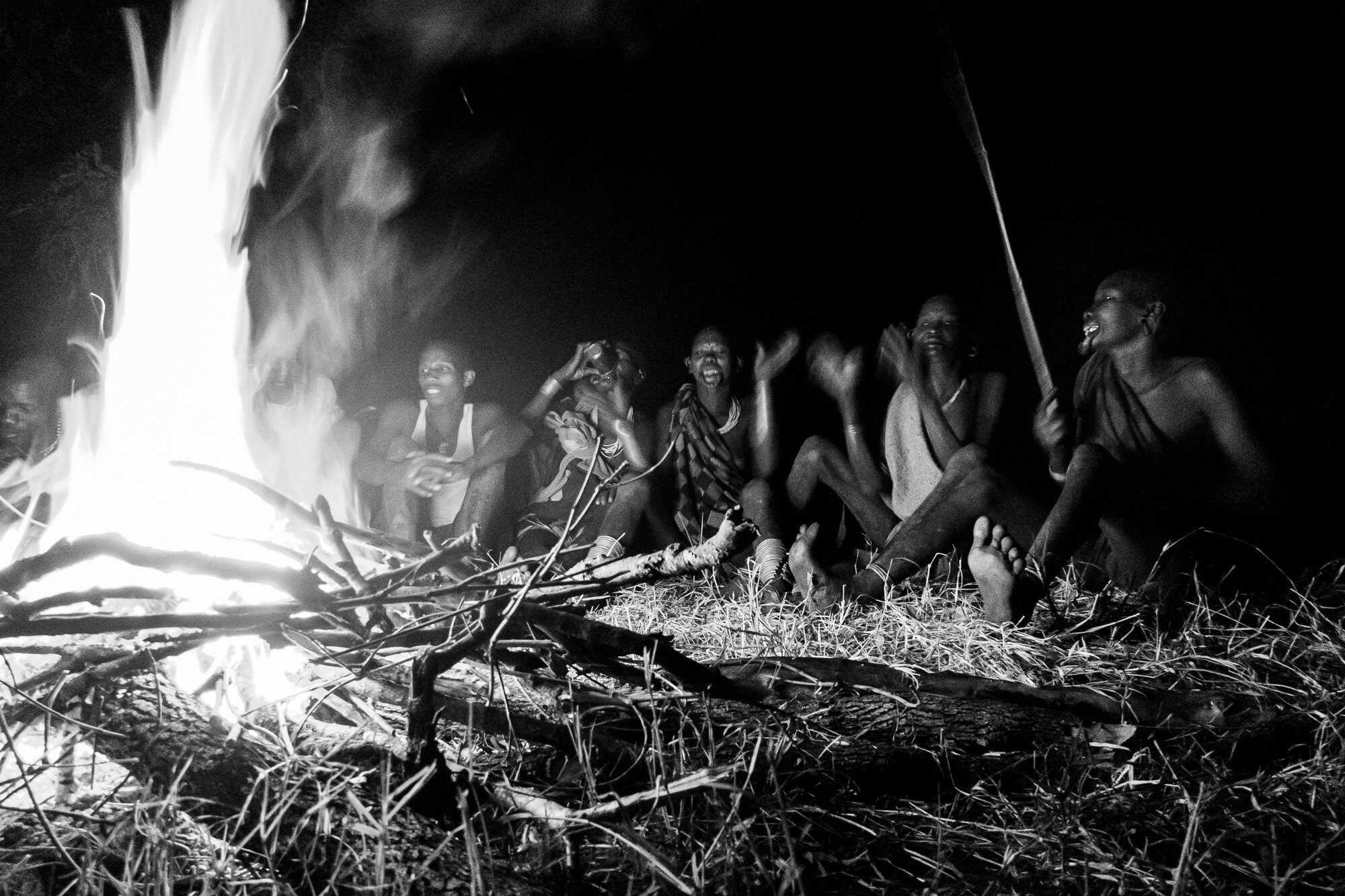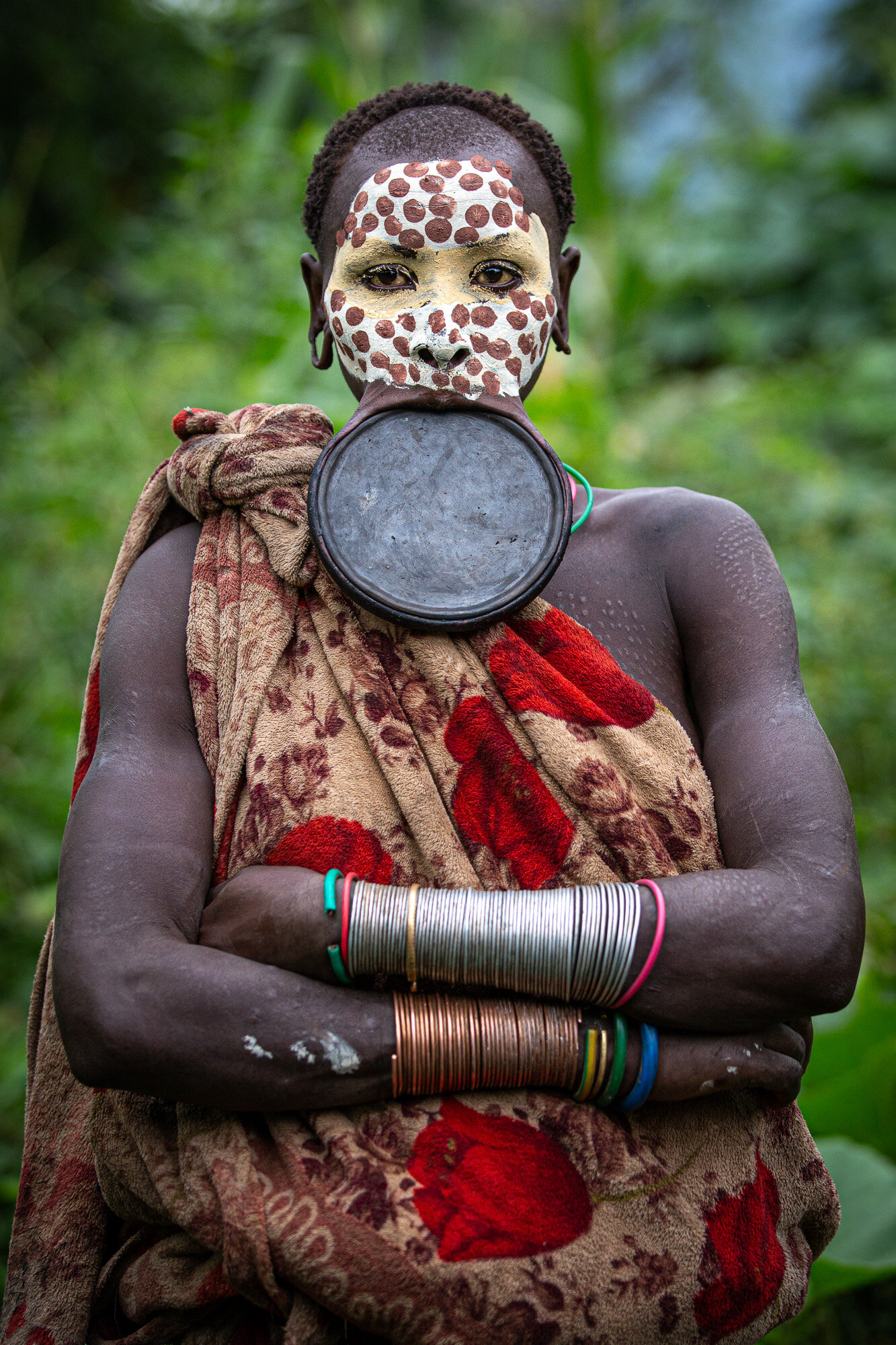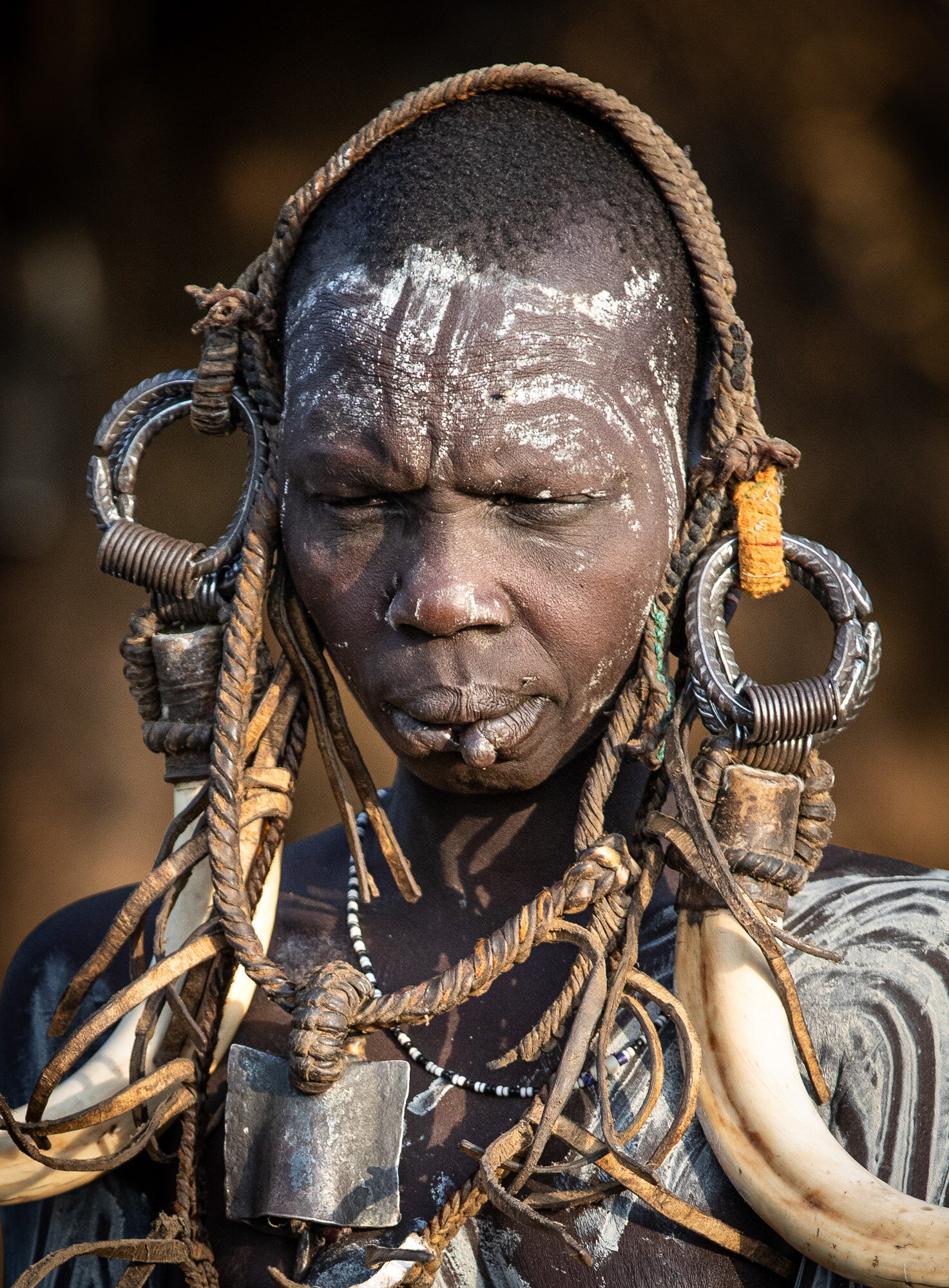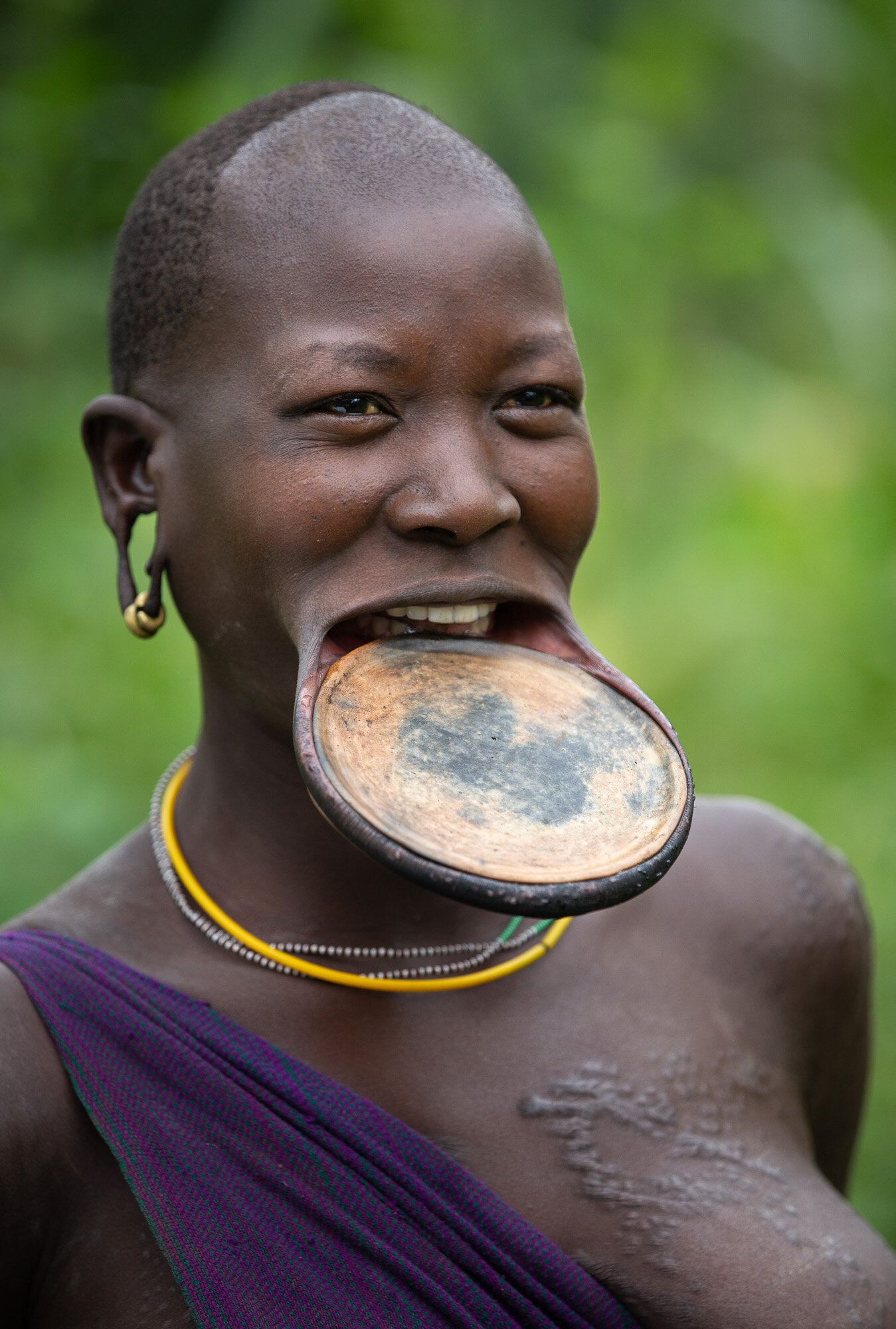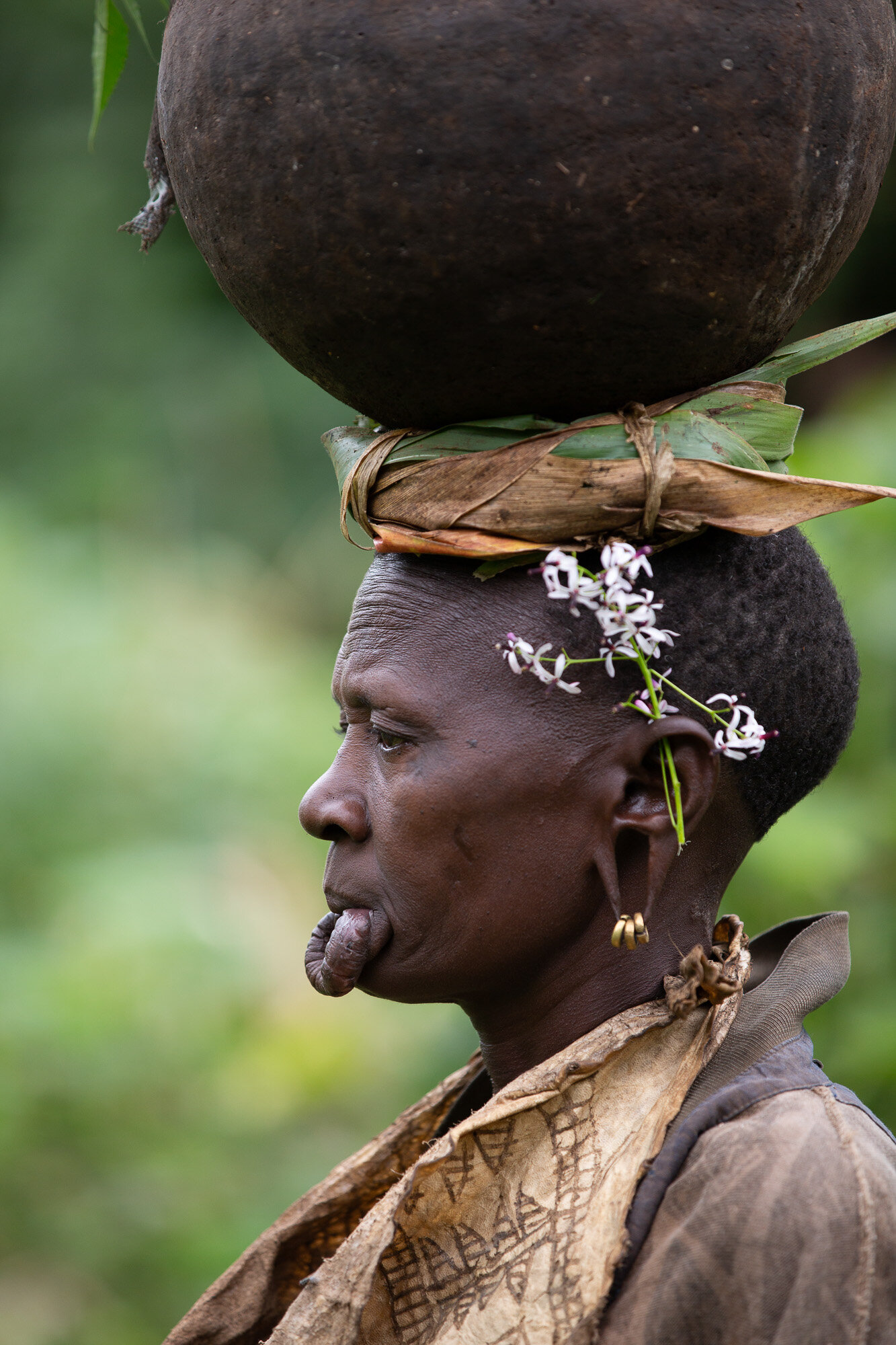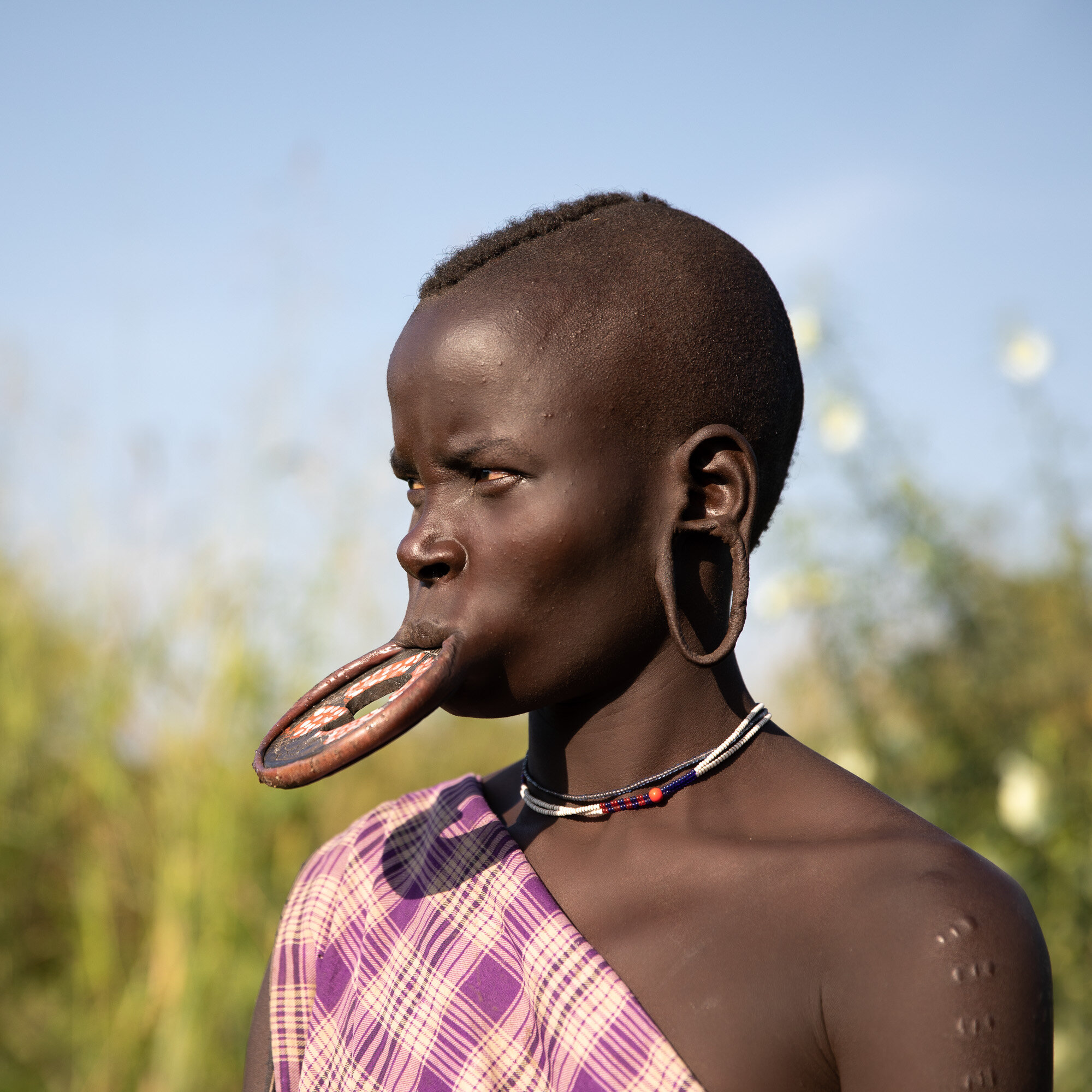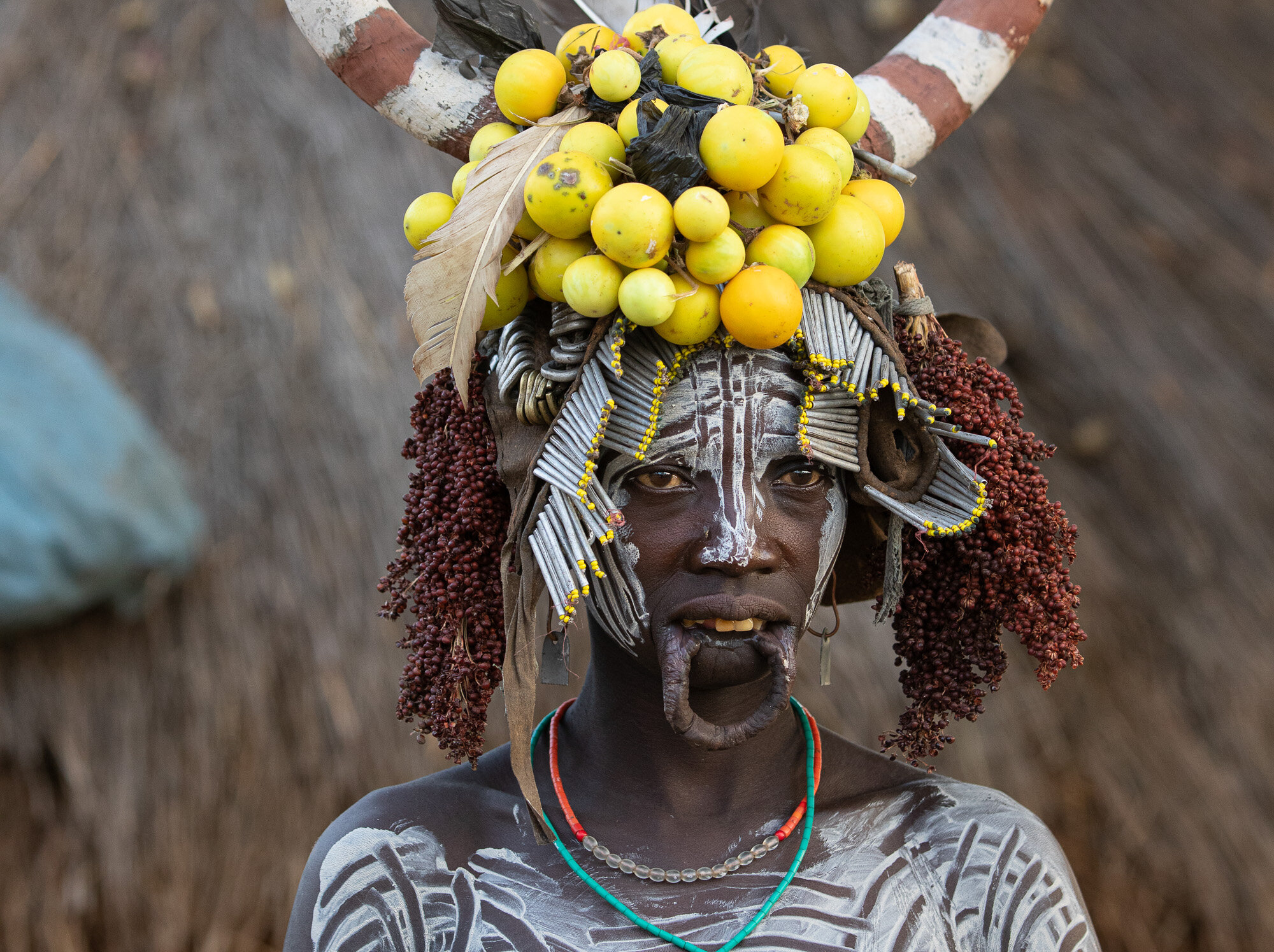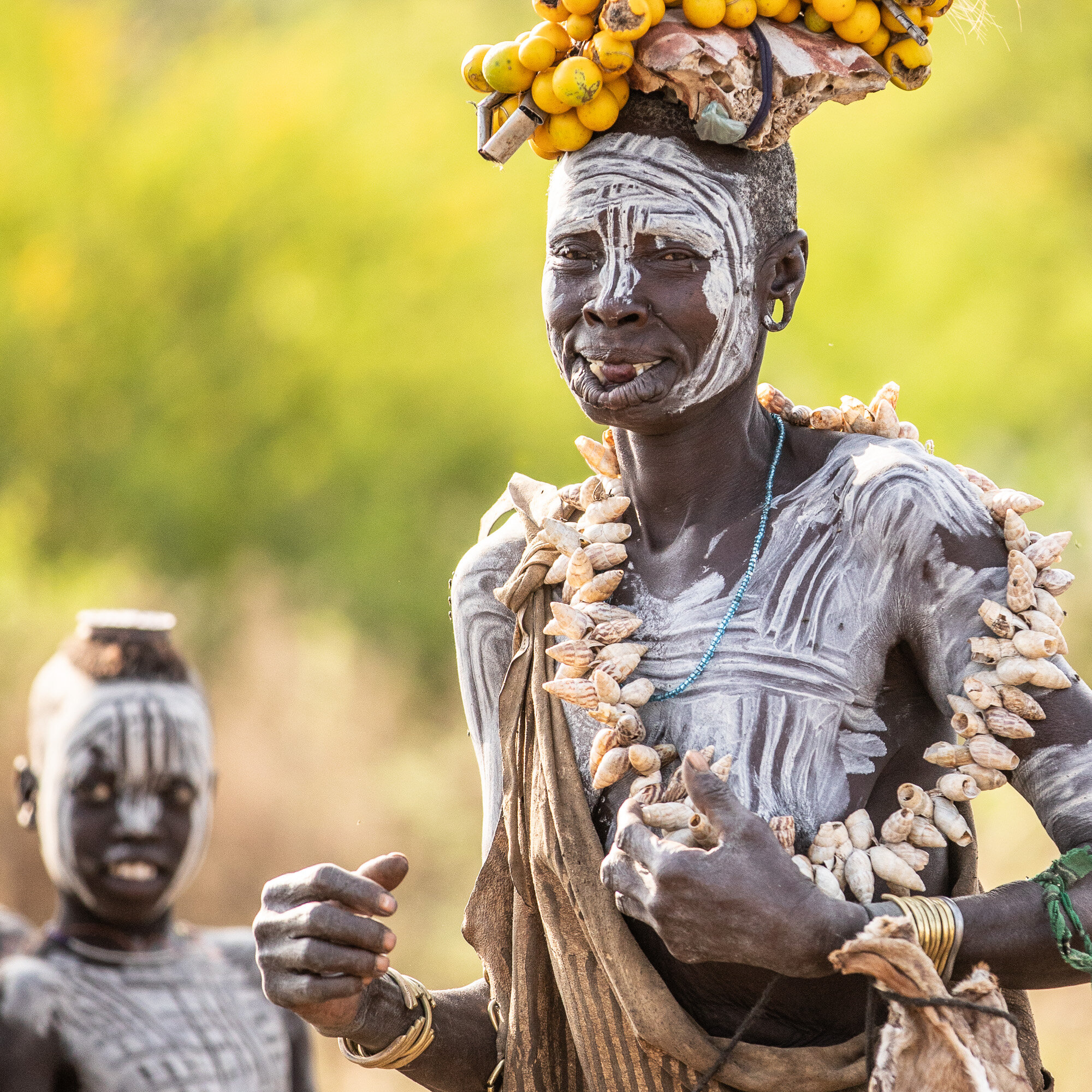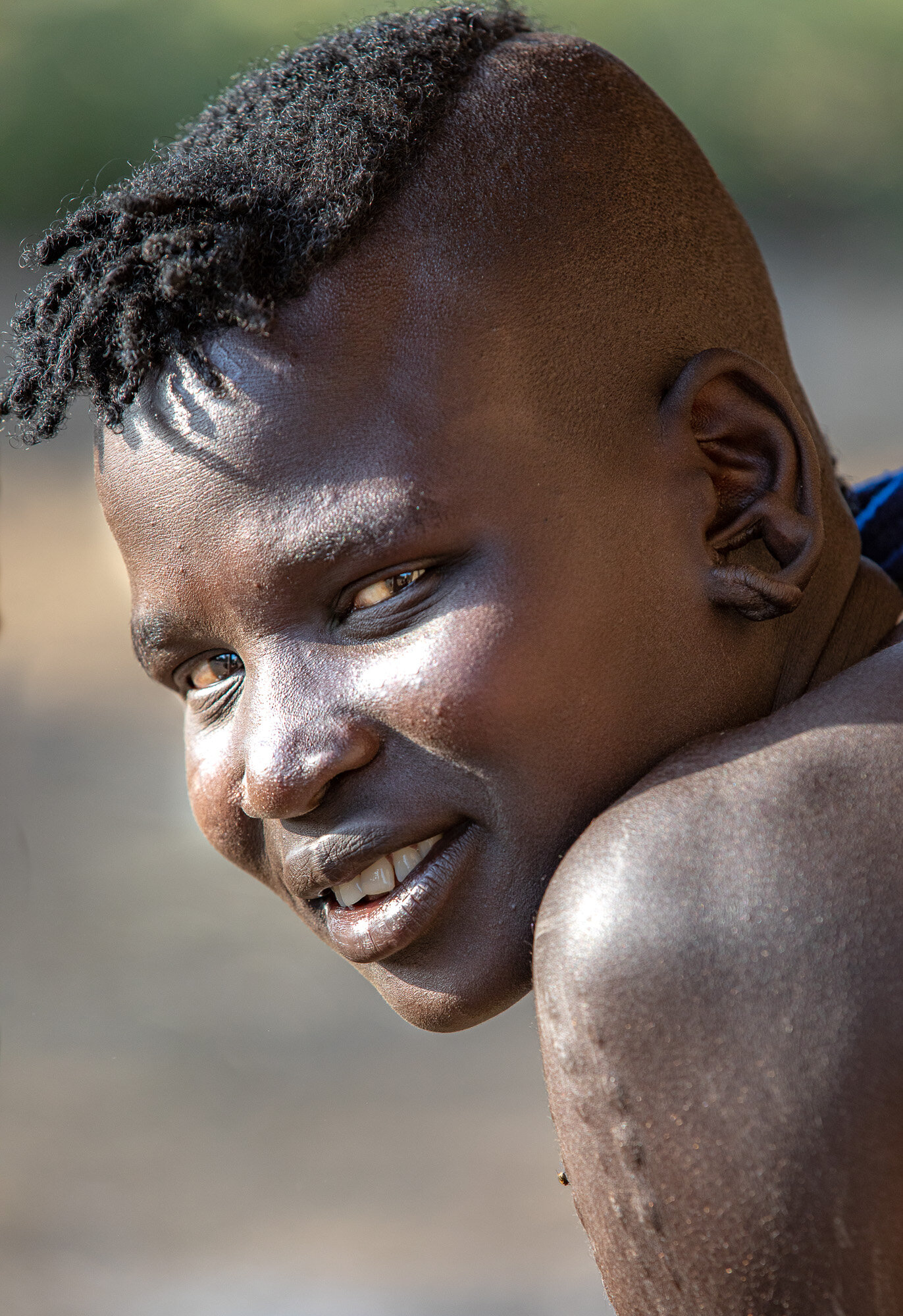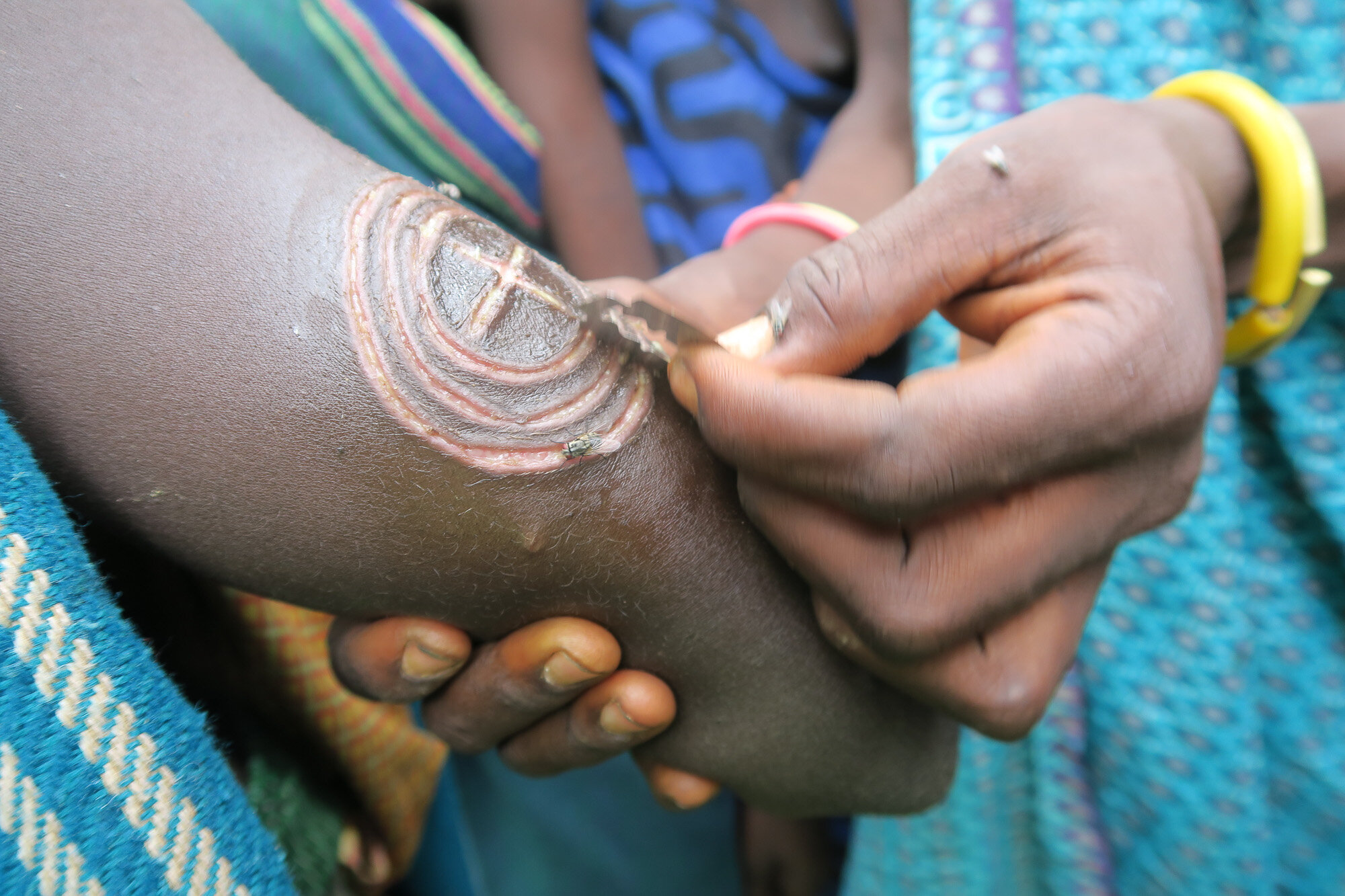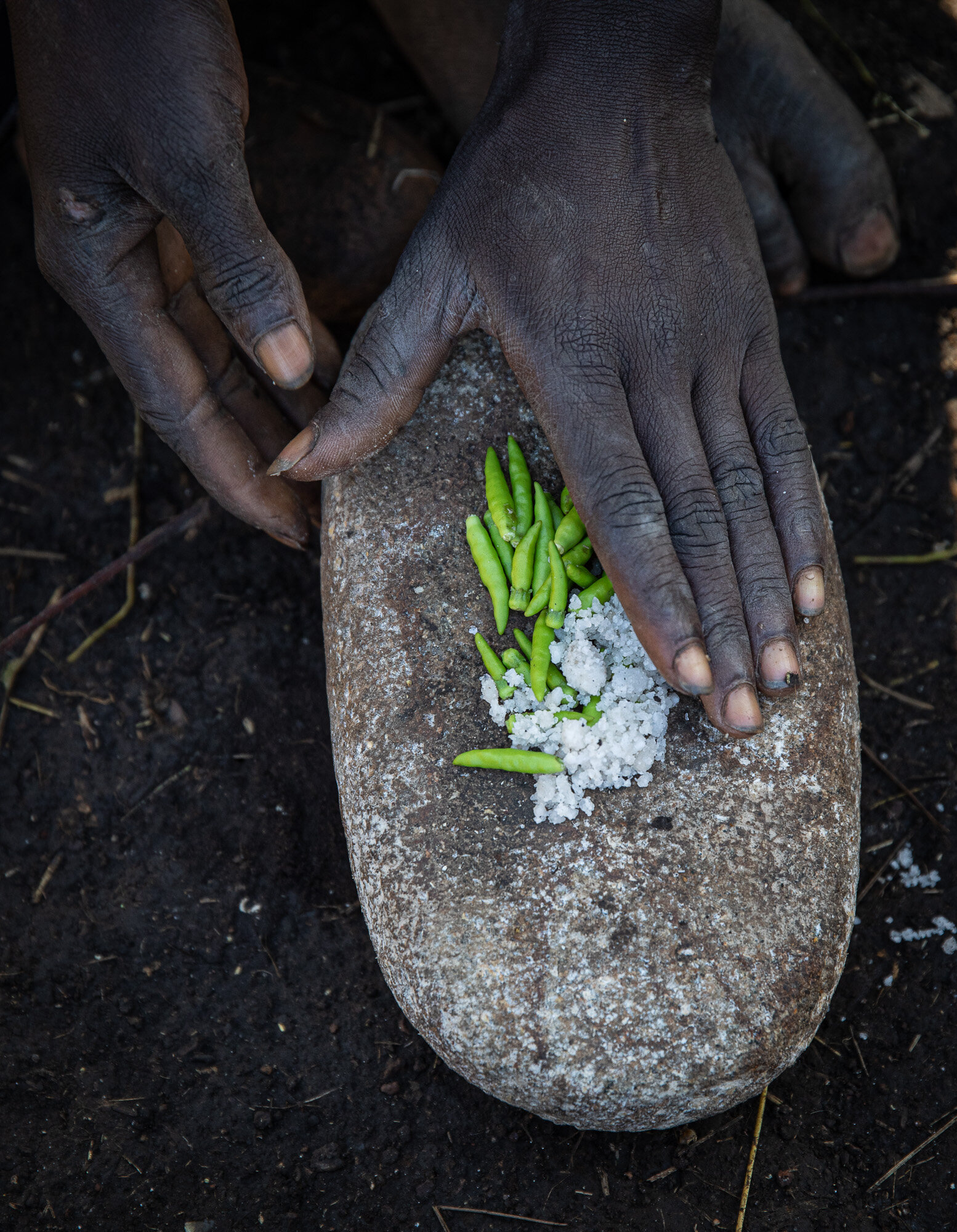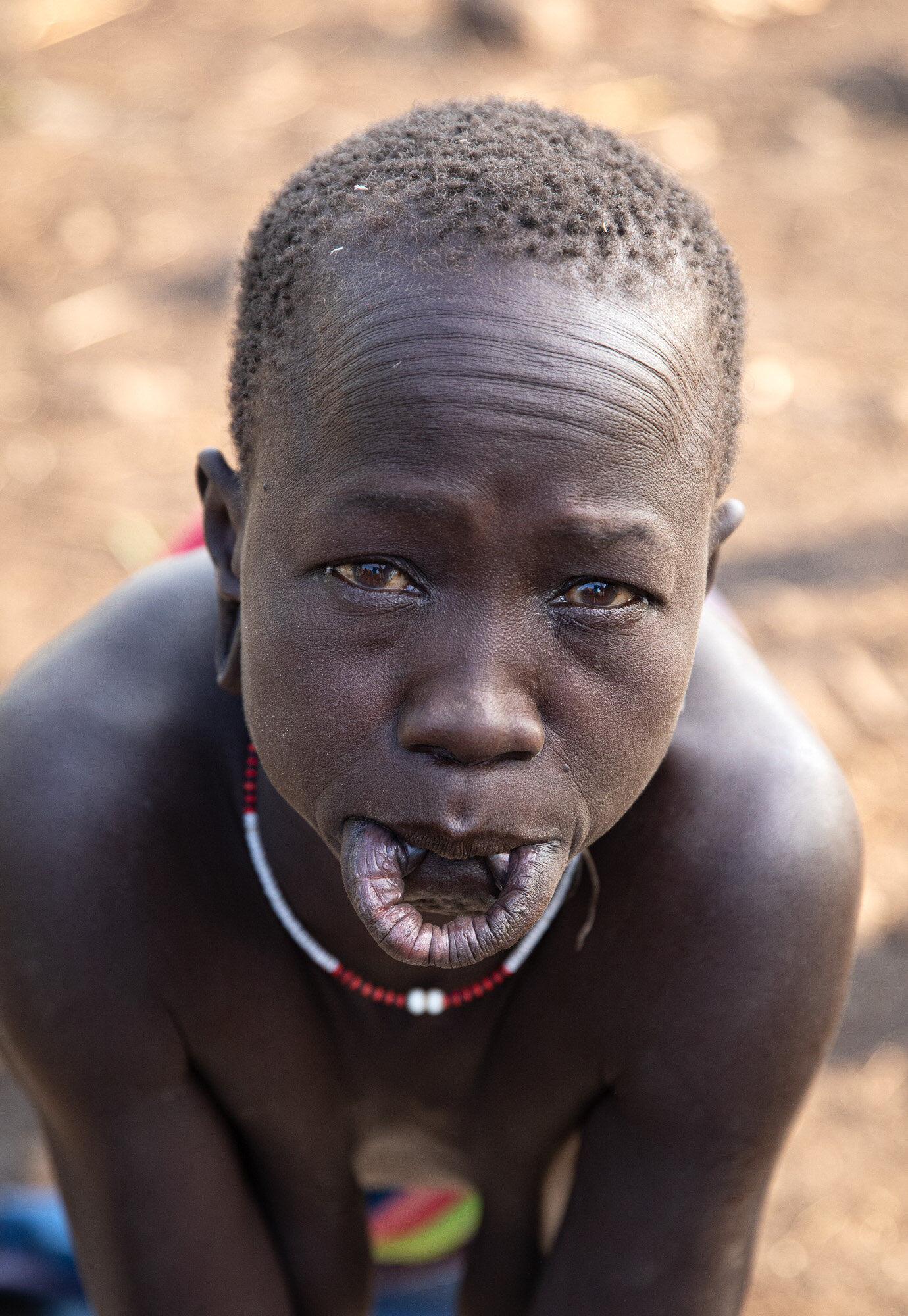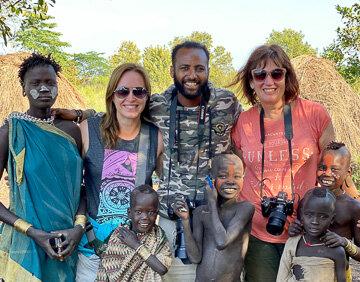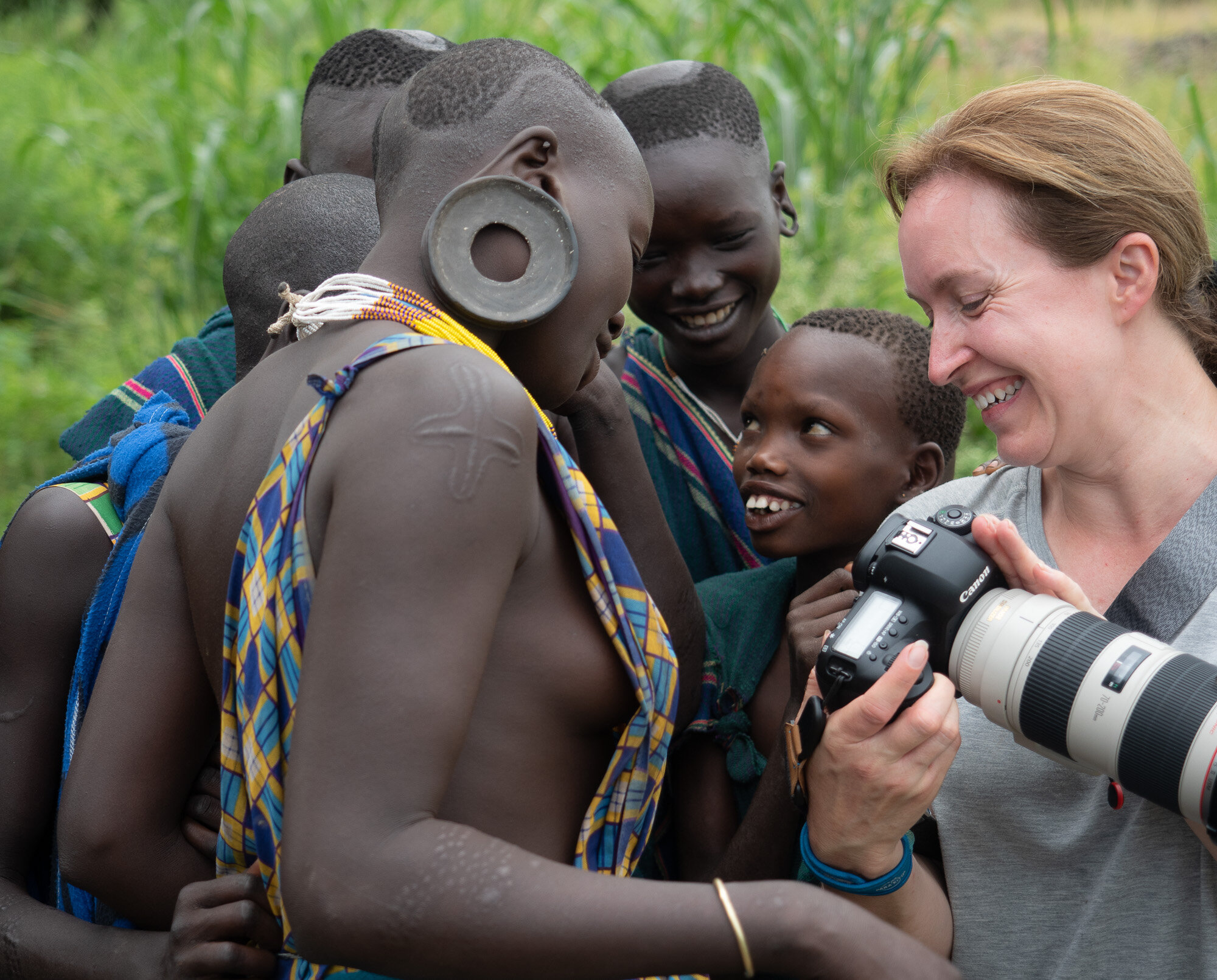The surma Tribe WOMEN’S WOBBLY BOTTOM LIPS
The feeling of their lower lips dangling and wobbling (from lip plates) against my cheeks as the Suri Tribe women kiss me this evening was something I’ll never forget. Golden light flickers from the fire and gently reflects and reveals the faces of those in our company. In the stillness of the night the gentle hisses and cracks from the warm glow were the only sounds other than the chiefs comforting words of ancient wisdom in this remote village in Southern Ethiopia. Language is no barrier to understanding his storytelling style and teachings passed down from generations. His soft, gentle and calming tone is something I can listen to for hours. As the evening progressed the drinking, singing and dancing got more intense as well as the games, dares and laughter!
the suri chief’s multiple wives with lip plates
I’d asked the Suri village chief to bring his wives tonight as previously it was only myself and the men around the evenings fire. His grateful wives joined us around the growing fire, their energy created an extra wild atmosphere and an element of unpredictability. My arms kept being grabbed and I was pulled to the women’s side throughout the evening. The orange flickering light shining repeatedly but momentarily highlighted their faces to show their joy, happiness and wobbly bottom lips as they moved. Receiving hugs, affection and kisses on my cheeks I was certain they were as thrilled as I was to be here together. Their kisses were nothing like I’ve ever experienced. These are the African tribal women who still wear lip plates.
The Suri Tribe are part of the larger Surma tribe (with the Mursi) and one of the last African groups to still wear the lip plates.
This Southern Ethiopia indigenous group live close to the border of South Sudan in an isolated part of the Upper Omo Valley.
what ethiopian tribes wear lip plates?
The Suri Tribe and Mursi Tribe are two of the ethnic groups collectively known as the Surma tribe. These are indigenous Ethiopian tribes in Southern Ethiopia’s Omo Valley. The Mursi Tribe are closely related to the Suri Tribe and they share a similar culture. The Mursi Tribe are in the Lower Omo Valley and the Suri Tribe live in the Upper Omo Valley. Traditionally the women in both of these African tribes wear lip plates.
the Mursi Tribe lip plates
The Mursi Tribe are visited more by tourists due to their location close to the Omo Valley town of Jinka. The Mursi Tribe live within the Mago National Park which borders the Omo National Park. The Mursi Tribe lip plates attract many tourists that are intrigued by this tradition. When travelling from Jinka you pay the entrance fee for Mago National Park and then a mandatory armed scout will escort you to a Mursi tribal village.
The Suri Tribe lip plates
The Suri Tribe are in the Upper Omo Valley, which doesn’t look far from the Mursi Tribe when looking at a map, but due to the mountainous terrain and inaccessible roads the Suri are quite isolated. There are additional challenges in getting to the Suri Tribe and staying with them, so they receive a lot less tourists. Photographers love the Suri Tribe as many of them love having their photos taken and are extremely creative with their styling. The Suri Tribe live around the town of Kibish in South West Ethiopia very close (within 20kms) to the border of South Sudan.
why do Mursi Tribe and Suri Tribe wear lip plates?
Like many traditions and cultural history of tribes the stories are passed down verbally from each generation. Local elders in villages and local guides can have different opinions based on what they’ve been told. There are a few theories on how the lip plate tradition started, but it is something that will never be 100% known. It is most commonly believed that it was to disfigure the girls and women to make them less attractive from slave traders. Then in time the Mursi and Suri Tribe lip plates have become a much loved and wanted symbol of beauty. The lip late process begins when a girl is 15-16 and it soon became linked to fertility and eligibility to marry.
lip plates are a symbol of pride and beauty
The men pay the chosen girls father with cattle for marriage and the bigger the lip plate the more cattle it will cost. The women understand how much their husbands have paid for their Mursi or Suri Tribe marriage and wear their symbolic lip plate when they serve food to them or in celebrations or ceremonies. However, often the girls have been promised to a man for marriage before they start the lip plate process with the bridal dowry already agreed. There is no doubt that the men see it is a sign of beauty and the women with lip plates take great pride in this symbolic part of their culture and their identity. The lip plates can be made of wood or clay, but most often clay. Often decorated with patterns and paint from their local resources - especially the lip plates in the Mursi villages.
A decorated Mursi Tribe lip plate
do lip plates hurt?
Once the lip has been stretched to the desired satisfaction it does not hurt. When the girls begin puberty their mother usually starts the process by inserting a small wooden stick below the lower lip. The wooden sick is replaced by bigger sticks/plugs and then clay disks that gradually get bigger to keep stretching the lower lip. During this process the lip can get infected and it can also break if stretched to quickly. It is not uncommon in a Surma tribe village to see women who have their lower stretched lip broken with both sections dangling and pointing towards the ground. Two to four of the young girls bottom teeth are also removed in this body modification process so the lower lip and mouth can hold the lip plate. The lip plates are also called lip discs or lip plugs. Certain processes of getting a lip plate do hurt, but once it has been created to the desired size there is no pain.
Mursi Tribe lip plate
Do ethiopian Omo Valley tribes still wear lip plates?
The tribal tradition of the lip plate is a girls choice and many of the younger generation are choosing to discontinue this practice. The government has also put pressure on stopping this practise as it can lead to infections which can cause serious health issues. The men highly regard the traditional lip plate culture, but most seem to respect the wishes of the girls on their decision. With this change it is only a matter of time until there will be no more lip plates in the Omo Valley tribes. The Surma people are currently one of the last tribal groups in Africa where it is still normal for women to have lip plates.
Most of the teenagers are now choosing not to continue with the lip plate tradition. Although ear plugs and body scarring are still practised and are for beauty, style and identity.
The Surma people use razors or branches with thorns for body scarring, then rubbing ash on it so it becomes raised.
On a female they are signs of beauty and identity. For a male body scarring is more symbolic and can have meanings.
The Suri Tribe and Mursi Tribe think hair is dirty so both males and females keep their hair very short. They use razors to create patterns and shapes in their hair styles.
how do these tribal women eat with lip plates?
The lip plates are not permanent and can be removed to eat and drink. The majority of the day they are not worn with the women choosing when to wear it. They stretch their lower lip around the outside of the clay disk/plate to insert it and can remove it quickly too. Some of the lip plates are quite big and heavy and the women might support the plate with their hand for stability and comfort. Some of the lips without the plate inserted dangle very low below the mouth, but the women with the smaller lip plates can have lower lips that look quite enlarged with bulk and bumps that don’t droop.
When the women cook or do chores they don’t wear their lip plates.
visiting the Suri and Mursi tribes on an Omo Valley photo tour
Much like if we get visitors to our home we can change our earrings, put on some nicer clothes or put on some make up, the Mursi and Suri tribal women act in a similar way. When tourists come to their villages they may insert their Lip plates and add some accessories or touch up some face/body paint. Lip plates attract tourists to the Mursi Tribe inparticular and due to most of the Mursi villages having a “pay per click” method of payment it is a good way for them to get the attention and payment from those visiting.
On an Omo Valley photo tour or any cultural tour remain mindful of the impact of your stay, your actions and those that have visited before you.
I’m singing with the chief and enjoying an afternoon of laughter with these wonderful people. These mums both have their lips dangling but can wear their lip plates when they choose.
Make the time to put your camera down on an Omo Valley photography tour and embrace the opportunities and experiences with these unique Ethiopian tribes. Seeing the Ethiopia tribes of the Omo Valley out of “tourist mode” is the best experience. My nights with the Suri Tribe around the campfire with the dangling lips of the chiefs wives against my cheeks gives an insight into these amazing, happy people and creates great experiences and moments for everyone involved.
READ MORE - BLOG POST - CAMPING WITH THE SURI TRIBE
WATCH VIDEO - BEHIND THE SCENES WITH THE SURI TRIBE
READ MORE - BLOG POST - AMAZING AFTERNOON WITH THE SURI TRIBE BOYS

